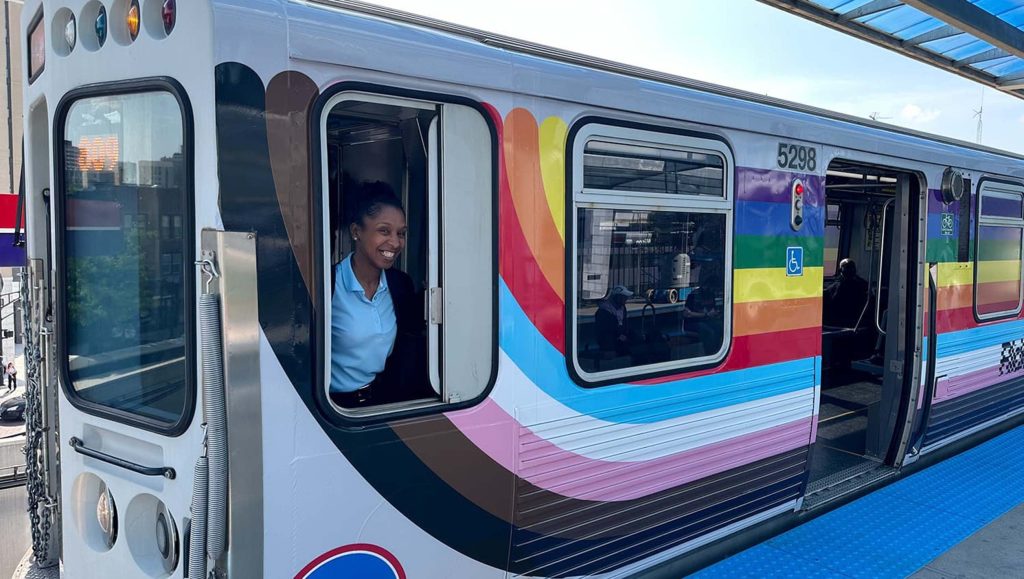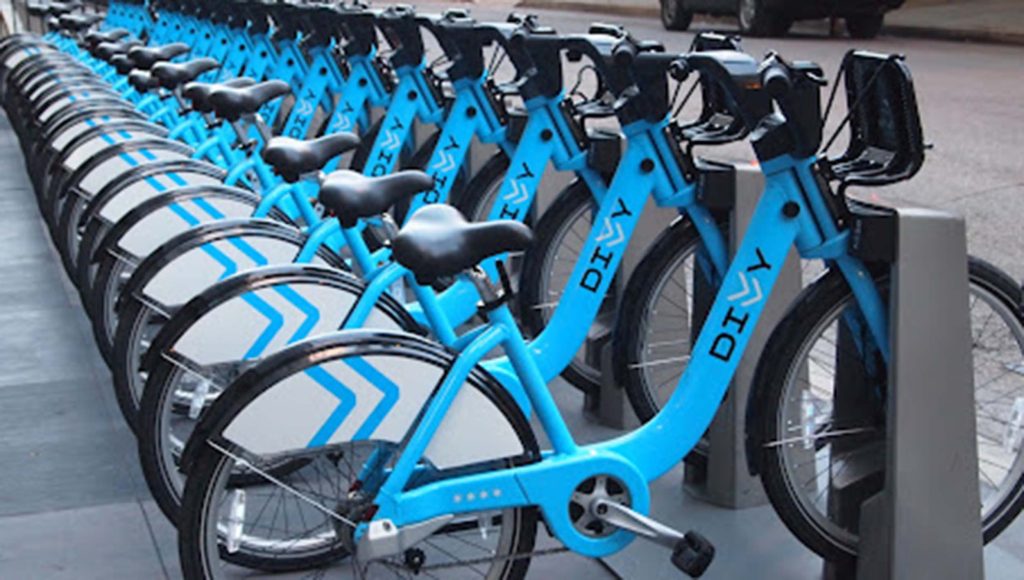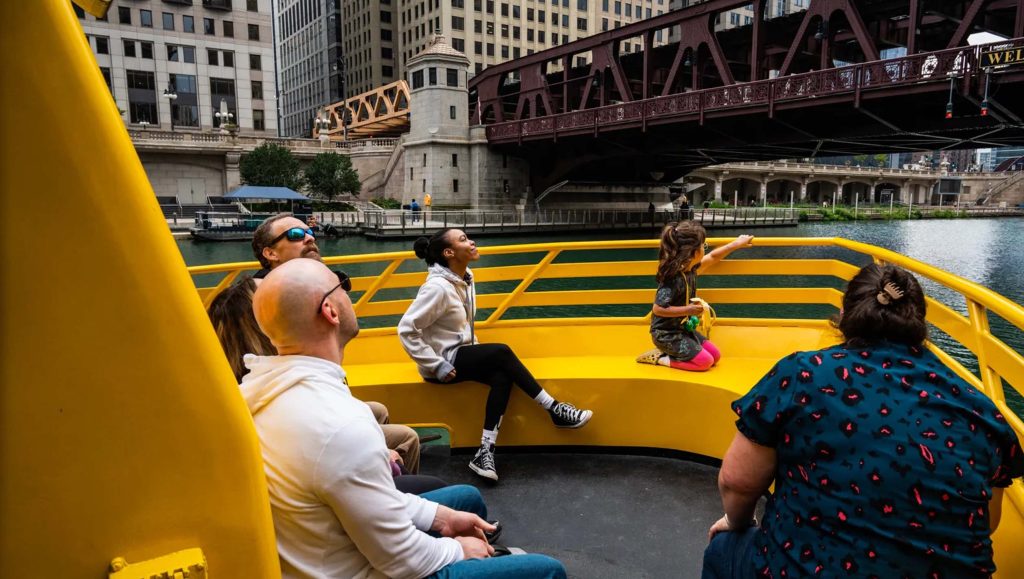
Chicago, known as the Windy City, is a bustling metropolis that boasts a rich cultural history, stunning architecture, and an extensive array of attractions. One of the key aspects of enjoying your time in Chicago is understanding how to navigate its comprehensive transportation system.
From the iconic “L” trains to buses, bikes, and boats, getting around Chicago is an adventure in itself. This guide will provide you with detailed tips and tricks to make your transportation experience in Chicago seamless and enjoyable.
1. Chicago Transit Authority (CTA): The Backbone of Public Transit
The Chicago Transit Authority (CTA) operates the second-largest public transportation system in the United States. It includes an extensive network of buses and trains (known as the “L” due to its elevated tracks), providing reliable service throughout the city and into some suburbs.

Trains (The “L”):
Routes:
The “L” consists of eight color-coded lines: Red, Blue, Brown, Green, Orange, Purple, Pink, and Yellow. Each line serves different parts of the city, with the Red and Blue lines operating 24/7.
Key Stops:
– Red Line: Connects Howard in the north to 95th/Dan Ryan in the south. Key stops include Howard, Belmont, Fullerton, and Roosevelt.
– Blue Line: Runs from O’Hare International Airport to Forest Park. Key stops include O’Hare, Jefferson Park, Logan Square, and Jackson.
– Brown Line: Travels from Kimball to the Loop. Key stops include Belmont, Fullerton, and Merchandise Mart.
– Green Line: Connects Ashland/63rd and Cottage Grove to Harlem/Lake. Key stops include Ashland, 35th/Bronzeville/IIT, and Adams/Wabash.
– Orange Line: Runs from Midway International Airport to the Loop. Key stops include Midway, Ashland, and Harold Washington Library-State/Van Buren.
– Purple Line: Primarily serves Evanston and the north side of the city. Key stops include Howard, Linden, and Merchandise Mart (during rush hours).
– Pink Line: Runs from 54th/Cermak to the Loop. Key stops include 18th, Polk, and Clark/Lake.
– Yellow Line: Connects Dempster-Skokie to Howard. Key stops include Oakton-Skokie and Howard.
Fares and Passes:
– Single Ride: $2.50
– 1-Day Pass: $10
– 3-Day Pass: $20
– 7-Day Pass: $28
– Ventra Card: A reusable contactless card for easy fare payment, available at CTA stations and online.
Tips for Using the “L”:
– Download the Ventra app for mobile ticketing and real-time transit updates.
– Peak hours are typically 7-9 AM and 4-6 PM; plan accordingly to avoid crowded trains.
– Keep an eye on service alerts, especially during winter when weather can impact schedules.
Personal Experience:
Riding the “L” gives you a unique perspective of the city, especially on the Brown and Green lines, which loop around downtown and offer views of Chicago’s iconic skyline. The convenience and reliability of the Red and Blue lines make them indispensable for both tourists and locals.
Buses:
Routes and Coverage:
The CTA operates over 100 bus routes covering the entire city, making it easy to reach destinations not directly served by the “L.”
Key Routes:
– #3 King Drive: Connects the South Side to downtown, passing through historic Bronzeville.
– #22 Clark: Runs from Howard to Harrison, covering a major north-south artery.
– #151 Sheridan: Travels from Union Station to the northern neighborhoods along Lake Shore Drive.
– #66 Chicago: Connects the Austin neighborhood to Navy Pier.
Fares and Passes:
– Single Ride: $2.25
– 1-Day Pass: $10
– 3-Day Pass: $20
– 7-Day Pass: $28
– Transfers: 25 cents within two hours of first fare payment.
Tips for Using CTA Buses:
– Use the Transit app for real-time bus tracking and route planning.
– Exact fare or a Ventra Card is required for boarding.
– Consider using buses during off-peak hours for a more relaxed ride.
Personal Experience:
CTA buses are a lifeline for reaching places like the Museum of Science and Industry or Wrigley Field. They offer a more scenic route compared to the “L” and are especially useful when exploring neighborhoods off the main train lines.
2. Metra: Suburban Commutes and Beyond
Metra is the commuter rail system serving the Chicago metropolitan area, providing a vital link between the city and its suburbs. With 11 lines radiating from downtown Chicago, Metra makes it easy to explore beyond the city limits.
Key Lines:
– UP-North: Connects Chicago to Kenosha, WI, with stops in Evanston, Highland Park, and Waukegan.
– BNSF Railway: Runs from Union Station to Aurora, serving communities like Downers Grove and Naperville.
– UP-West: Connects Ogilvie Transportation Center to Elburn, passing through Oak Park and Wheaton.
– Southwest Service: Travels from Union Station to Manhattan, serving the southwest suburbs.
Fares and Passes:
– Single Ride: Varies by zone, starting at $4
– Weekend Pass: $10 for unlimited rides on Saturdays and Sundays
– 10-Ride Pass: Approximately the cost of nine rides
– Monthly Pass: Varies by zone, offering unlimited rides for a calendar month
Tips for Using Metra:
– Check schedules in advance, as train frequencies vary by time of day and line.
– Purchase tickets via the Ventra app for convenience.
– Be mindful of peak travel times, typically in the early morning and late afternoon.
Personal Experience:
Metra is my go-to for day trips to the suburbs or exploring further afield. The scenic routes, particularly along the UP-North line, offer a relaxing escape from the hustle and bustle of downtown Chicago.
3. Divvy Bikes: Pedal Your Way Through the City
Divvy is Chicago’s bike-sharing program, providing a sustainable and fun way to explore the city. With thousands of bikes and hundreds of stations, Divvy offers a flexible alternative for short trips and sightseeing.

How It Works:
– Membership: Options include single rides ($3.30 for 30 minutes), day passes ($15), and annual memberships ($108).
– Stations: Located throughout the city, especially near major attractions, parks, and transit hubs.
– Usage: Simply unlock a bike using the Divvy app or a kiosk, ride to your destination, and dock the bike at a nearby station.
Tips for Using Divvy:
– Plan your route using the Divvy app, which shows station locations and bike availability.
– Wear a helmet and follow local traffic laws for safety.
– Take advantage of bike lanes and trails, such as the Lakefront Trail, for a scenic ride.
Personal Experience:
Riding a Divvy bike along the Lakefront Trail is one of my favorite ways to enjoy Chicago’s waterfront. The convenience of docking stations near major attractions makes it easy to combine biking with sightseeing.
4. Taxis and Ride-Sharing: Convenience at Your Fingertips
For those who prefer door-to-door service, taxis and ride-sharing services like Uber and Lyft are widely available throughout Chicago. These options provide flexibility and convenience, especially for late-night travel or areas not well-served by public transit.
Taxis:
– Availability: Easily hailed on the street, at taxi stands, or through apps like Curb and Arro.
– Fares: Metered rates start at $3.25, with additional charges based on distance and time.
– Tips: Tipping 15-20% is customary.
Ride-Sharing:
– Services: Uber, Lyft, and Via operate in Chicago, offering various ride options from shared rides to luxury vehicles.
– Fares: Vary based on demand, distance, and service type.
– Tips: Optional, but appreciated for good service.
Tips for Using Taxis and Ride-Sharing:
– Compare prices between taxis and ride-sharing apps to find the best rate.
– Check for promotions and discounts offered by ride-sharing services.
– Use ride-sharing for late-night travel when public transit options are limited.
Personal Experience:
I often use ride-sharing services for late-night returns to my hotel or when traveling with heavy luggage. The convenience and reliability make it a hassle-free option, especially in a city as busy as Chicago.
5. Water Taxis: A Scenic Commute
Chicago’s water taxis offer a unique and scenic way to travel along the Chicago River, providing convenient access to major attractions and stunning views of the city’s architecture.

Services:
– Chicago Water Taxi: Operates between Chinatown, the Museum Campus, and Michigan Avenue.
– Shoreline Water Taxi: Connects Navy Pier with Museum Campus and other riverfront locations.
Fares and Passes:
– Single Ride: $6-$10, depending on the route
– Day Pass: $10-$20, offering unlimited rides for a day
– Tips: Purchase tickets online or at boarding locations for convenience.
Tips for Using Water Taxis:
– Check the schedule in advance, as service frequency varies by season.
– Use water taxis for a leisurely, scenic route to attractions along the river, such as the Willis Tower, the Art Institute of Chicago, and the Chicago Architecture Center.
– Combine water taxis with other modes of transportation for a comprehensive sightseeing experience.
Personal Experience:
Taking a water taxi is one of the most enjoyable ways to travel in Chicago. The views of the skyline and riverfront architecture are breathtaking, and the gentle ride provides a relaxing break from walking or using public transit. I especially love the route from Michigan Avenue to Chinatown, offering a unique perspective of the city’s diverse neighborhoods.
6. Car Rentals and Driving in Chicago
Renting a car in Chicago can be a practical option for exploring areas outside the reach of public transit or for those planning day trips to nearby attractions. However, driving in a busy city like Chicago comes with its own set of challenges, including traffic congestion, parking difficulties, and navigating unfamiliar streets.
Rental Options:
– Major Companies: Hertz, Enterprise, Budget, and Avis have multiple locations throughout the city, including at airports and downtown.
– Car Sharing: Services like Zipcar and Turo offer flexible rental options, including hourly rentals and peer-to-peer car sharing.
Tips for Renting a Car:
– Book in Advance: Reserve your rental car early, especially during peak travel seasons, to secure the best rates and availability.
– Choose the Right Vehicle: Consider the size of your group and the type of driving you’ll be doing. A compact car is ideal for city driving, while an SUV might be better for trips to nearby natural attractions.
– Insurance: Review your existing auto insurance and credit card coverage to avoid unnecessary rental insurance fees.
Driving Tips:
– Parking: Street parking can be challenging to find and often requires payment via meters or apps like ParkChicago. Parking garages are available but can be expensive.
– Traffic: Be prepared for heavy traffic, especially during rush hours. Use navigation apps like Google Maps or Waze to find the best routes and avoid congestion.
– Toll Roads: If you plan to drive outside the city, be aware of toll roads. An I-PASS transponder can save time and money on tolls.
Personal Experience:
While I generally prefer public transportation in Chicago, renting a car is sometimes necessary for visiting attractions like the Indiana Dunes National Park or the Fox River Valley. The convenience of having a car for these trips outweighs the hassle of city driving.
7. Walking: Discovering Chicago on Foot
Walking is one of the best ways to explore Chicago’s vibrant neighborhoods, parks, and waterfronts. The city’s grid layout, pedestrian-friendly streets, and numerous landmarks make it easy and enjoyable to navigate on foot.
Key Walking Areas:
– The Loop: Chicago’s central business district, home to iconic skyscrapers, Millennium Park, and the Art Institute of Chicago.
– Riverwalk: A scenic promenade along the Chicago River, featuring restaurants, public art, and boat tours.
– Lakefront Trail: An 18-mile path along Lake Michigan, offering stunning views of the skyline and access to beaches and parks.
– Magnificent Mile: A bustling stretch of Michigan Avenue known for its shopping, dining, and architectural landmarks.
– Lincoln Park: A large urban park with the Lincoln Park Zoo, conservatory, and numerous trails.
Tips for Walking in Chicago:
– Comfortable Footwear: Wear comfortable shoes, as you’ll likely cover a lot of ground.
– Weather Preparedness: Chicago’s weather can be unpredictable. Carry an umbrella or rain jacket, and dress in layers.
– Safety: Stay aware of your surroundings, especially when walking alone at night. Stick to well-lit, populated areas.
Personal Experience:
Walking through Chicago is a delight, with each neighborhood offering its own unique charm and attractions. Some of my favorite walks include the Lakefront Trail during sunrise and a leisurely stroll along the Riverwalk in the evening.
8. Practical Tips and Tricks for Chicago Transportation
1. Timing Your Travels:
– Avoid Rush Hours: Peak travel times are typically 7-9 AM and 4-6 PM. Plan your trips outside these hours to avoid crowded trains and buses.
– Early Mornings and Late Nights: Early mornings are ideal for sightseeing without the crowds, while late nights can offer a quieter, more relaxed experience in the city.
2. Using Transit Apps:
– Transit App: Provides real-time updates for CTA buses and trains, route planning, and service alerts.
– Ventra App: Allows you to purchase and manage transit fares, including Metra tickets and CTA passes.
– ParkChicago: Simplifies street parking payments and helps you find available parking spots.
3. Accessibility:
– CTA Accessibility: Most CTA buses and trains are wheelchair accessible. Look for the wheelchair symbol on accessible vehicles.
– Metra Accessibility: Many Metra stations and trains are accessible, but it’s best to check specific station information in advance.
– Divvy Accessibility: While Divvy bikes themselves are not specifically designed for accessibility, adaptive bike options are available through partner organizations.
4. Safety and Security:
– Personal Belongings: Keep an eye on your belongings, especially in crowded areas. Use a crossbody bag or backpack to deter theft.
– Emergency Contacts: Save important contacts, including local emergency numbers, in your phone.
– Trust Your Instincts: If something feels off, remove yourself from the situation. Don’t hesitate to seek help from transit staff or local authorities.
5. Combining Modes of Transportation:
– Multimodal Journeys: Use a combination of trains, buses, bikes, and walking to create efficient and enjoyable travel routes.
– Day Passes: Consider purchasing day passes for unlimited rides on CTA services, making it easy to switch between different modes of transport.
Personal Experience:
Utilizing a mix of transportation options has allowed me to experience Chicago from different perspectives. From the elevated views of the “L” to the serene waters of the river taxis, each mode offers its own unique charm and convenience.
Navigating Chicago’s transportation system can be an adventure in itself, offering a variety of ways to explore this dynamic city. Whether you prefer the convenience of public transit, the flexibility of ride-sharing, the scenic views of water taxis, or the freedom of biking, Chicago has something to offer every traveler. By following these tips and tricks, you can make the most of your time in the Windy City and discover all that it has to offer.
From the bustling streets of the Loop to the tranquil shores of Lake Michigan, Chicago’s diverse neighborhoods and attractions are waiting to be explored. So grab your Ventra card, hop on a bike, or set sail on a water taxi, and immerse yourself in the vibrant culture and rich history of this incredible city.